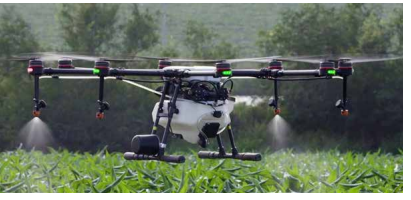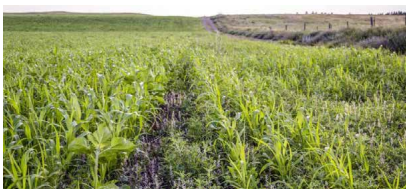


We seek to apply the best agricultural practices in our farms, through the responsible use of natural resources and the most modern and sustainable technologies, with the mission of producing quality food for a growing world population.
Our sector is one of the main drivers of the country’s productive, economic and social development. We believe that there is an important productive potential in our agricultural lands and, through the implementation of the best productive practices, which allow us to apply all our knowledge, we enhance the value of the land and increase its productivity.
SOIL MANAGEMENT
The soil is the basis of our production and, therefore, we carry out soil conservation and sustainable management practices in our farms to minimize the risks associated with soil compaction caused by the intensive use of agricultural machinery, as well as their erosion due to the transformation of soils into productive areas.
The implementation of good agricultural practices, such as crop rotation, direct seeding techniques and cover crops, contribute to soil conservation. Precision agriculture technology is widely used; thanks to land mapping, it is possible to optimize the application of agricultural inputs, both fertilizers and phytosanitary products.
BIOBEDS: We build biobeds in showers and eyewashes near the agrochemical tanks. In this way, we prevent any product surplus from having an impact on the soil, as well as on the water table, which are very important resources for our activity. We carry out good agricultural practices with responsibility, which we monitor through indicators, controlling different variables:
Service crops (or cover crops): We have been working with this technique for more than 10 years and we have grown exponentially in the last 4 years; currently, we planted more than 25,000 ha. We started with a single-species crop and today we are testing different species and polyphytic systems (more than one species in the same crop), with different densities, sowing dates, inoculated in the farm or with professional seed treatment systems, fertilized, etc. We conducted training with INTA and private technicians, who helped us to implement and improve the system. These crops provide organic matter (carbon) to the soil, improving water infiltration into the soil, controlling weeds and pests, helping to reduce the use of phytosanitary products, recycling nutrients, helping to prevent erosion (wind and water), improving water use and “water harvesting”, and reducing evaporation.
Professional seed treatment plants: We have two professional seed treatment plants, one in the south and one in the north of the country. All wheat, soybean, specialty and cover crops seeds are processed here. Inoculation is performed and protected from soil pathogens. With this system the process is optimized, using the right amount of products, generating the least damage to the seed. This allows us to have the seed available in a timely manner for planting. Currently, we are incorporating QR coding, in order to guarantee and automate the traceability of the process.
Precision planting: We have an incentive plan for contractors who incorporate this seeding system, financing the purchase and discounting the rate. With these machines, we can place in each zone of the lot the density of seeds and the amount of fertilizer that corresponds to each productive environment. It improves planting, reducing seeding failures and improving the timing of births. At the same time, it generates a georeferenced map with all the information of the work, point by point. We currently have 63% of the corn area with this planting system; the plan is, in two more seasons, to have 100%.
Variable seeding on winter crops (wheat and malting barley): Through this season, we incorporated 1,164 hectares of variable seeding in wheat and barley, equivalent to 11% of the sown area. Variable dosage (or VRT) is a precision agriculture technology that allows us to divide an agricultural unit according to input needs; in this way, each zone can have a specific management and receive the necessary nutrients with the appropriate dosage for each area.
Dronescope and corteva flight: We added as technology two tools for plant counting in corn, soybean and sunflower, and the percentage of coverage in wheat and winter cereals. Both applications work with a drone, which takes several images of the lots and then the app processes the information, based on algorithms and artificial intelligence, and delivers a report. On an experimental basis, information on weeds and weed coverage is also collected. One of the uses of this tool is the application of variable doses of nitrogen fertilizers in relation to the coverage achieved; in this way, an efficient use of inputs is made and the environment is protected.
TECHNOLOGICAL INNOVATION AND AGROINTELLIGENCE
Investment in new technologies contributes not only to production efficiency, but also to the development of a sustainable and resource-efficient activity. For this reason:
Quality management of agricultural work and processes - gis laboratory: For more than 15 years we have been carrying out inspections of the machinery we use for all the Company’s agricultural work. Each of the agricultural operations is subjected to meticulous quality controls. All these procedures are written in different protocols. The information is digitized and stored in an orderly, georeferenced and systematized manner in databases. In addition to the work, the plant stand is monitored, the condition of the silo bags, yield estimates are made and crop losses are evaluated.
Plant stand: We use drones for plant counting.

Silo bag: We use humidity, temperature and CO2 sensors, which are monitored periodically and define a quality for each silo; this information is shared with the logistics area, which plans and coordinates the loading of grain.
Yield estimation: To perform this operation, the GIS laboratory prepares, using satellite images, digital and georeferenced maps, which zone the plots. These digital maps are sent to the quality and production area, which, using smartphone technology, takes targeted samples of the different grains; once all the information is consolidated, the estimate is made. Within the static analysis of machinery, one of the most relevant machines is the “sprayer”, due to the amount of surface area it works and the inputs it uses. It is carried out twice a year per machine, where more than 10 critical points are evaluated. We have made a map of the quality of water used in spraying, both in our own and rented farms, and it is updated annually. We are using modern reports for the analysis and management of the information. QR code technology is used to identify the machinery. GIS laboratory: More than 14k ha of seeding prescriptions with variable seed density are carried out from the GIS laboratory. Annually, more than 100k ha of yield estimation maps, more than 60k ha of yield maps, and, periodically, crop condition maps and maps of the impact of climatic phenomena (flooding, hail, etc.) are prepared. All production trials are statistically analyzed, generating information for future production decision making.
GIS laboratory: More than 14k ha of seeding prescriptions with variable seed density are carried out from the GIS laboratory. Annually, more than 100k ha of yield estimation maps, more than 60k ha of yield maps, and, periodically, crop condition maps and maps of the impact of climatic phenomena (flooding, hail, etc.) are prepared. All production trials are statistically analyzed, generating information for future production decision making.
Acronex: We have 10 sprayers and we set up a program to acquire 10 more during the 22/23 season and 5 during the 23/24 season, in order to monitor 90% of the applied area in two more seasons. We continue with the bonus program for having this technology and the granting of loans to acquire this system. This system monitors, in real time, the status of the machine and all its components and, together with the weather information obtained from the built-in station, generates a quality map with automatic alerts for the operator and the person responsible for the operation via e-mail or sms; this allows us to anticipate possible errors and correct on the fly; it also allows us to see the traceability of all the work carried out.